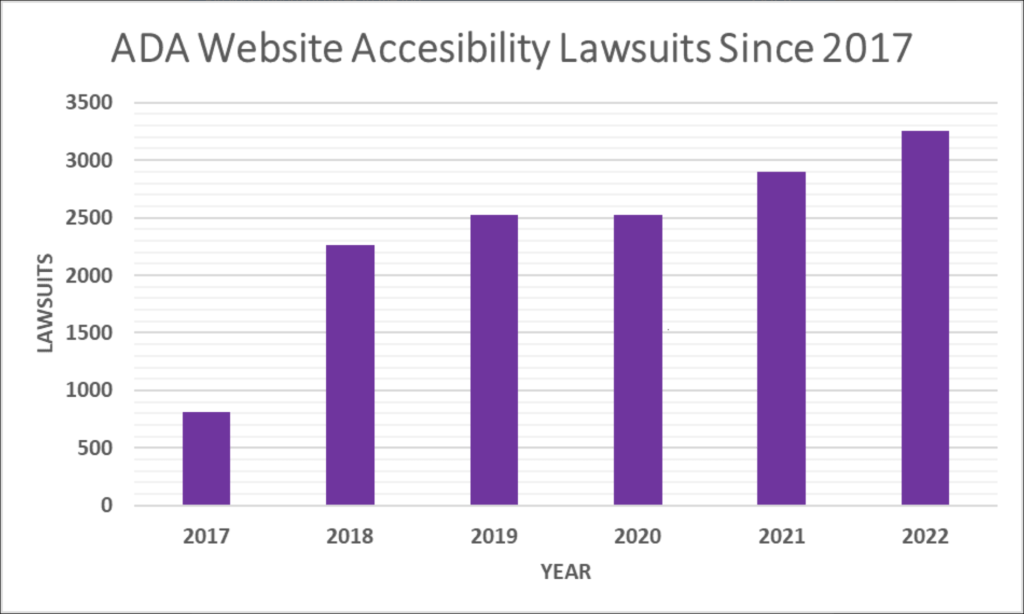The digital landscape has witnessed a transformation in the application of the American Disabilities Act (ADA), with U.S. courts recognizing the importance of web accessibility. This shift has led to a surge in ADA-related lawsuits (see Figure 1). Source: Seyfarth Shaw LLP, 2023 The best way to protect your website would be adherence to best practices, often reflected in the Web Content Accessibility Guidelines (WCAG) 2.0 and 2.1 (CLICK HERE WCAG 2) as defined by its governing body, the worldwide web consortium (W3C,CLICK HERE). The multifaceted impact of ADA Title III is evident, highlighting the legal, financial, and market considerations that underscore the pressing need for web accessibility in today’s dynamic digital environment. Quick TLDR:
Many companies of all sizes from big name companies such as Nike(CLICK HERE) and Rihanna’s Fenty Beauty (

Why Automated Widgets Fall Short
In the age of digital inclusivity, a recent legal settlement




